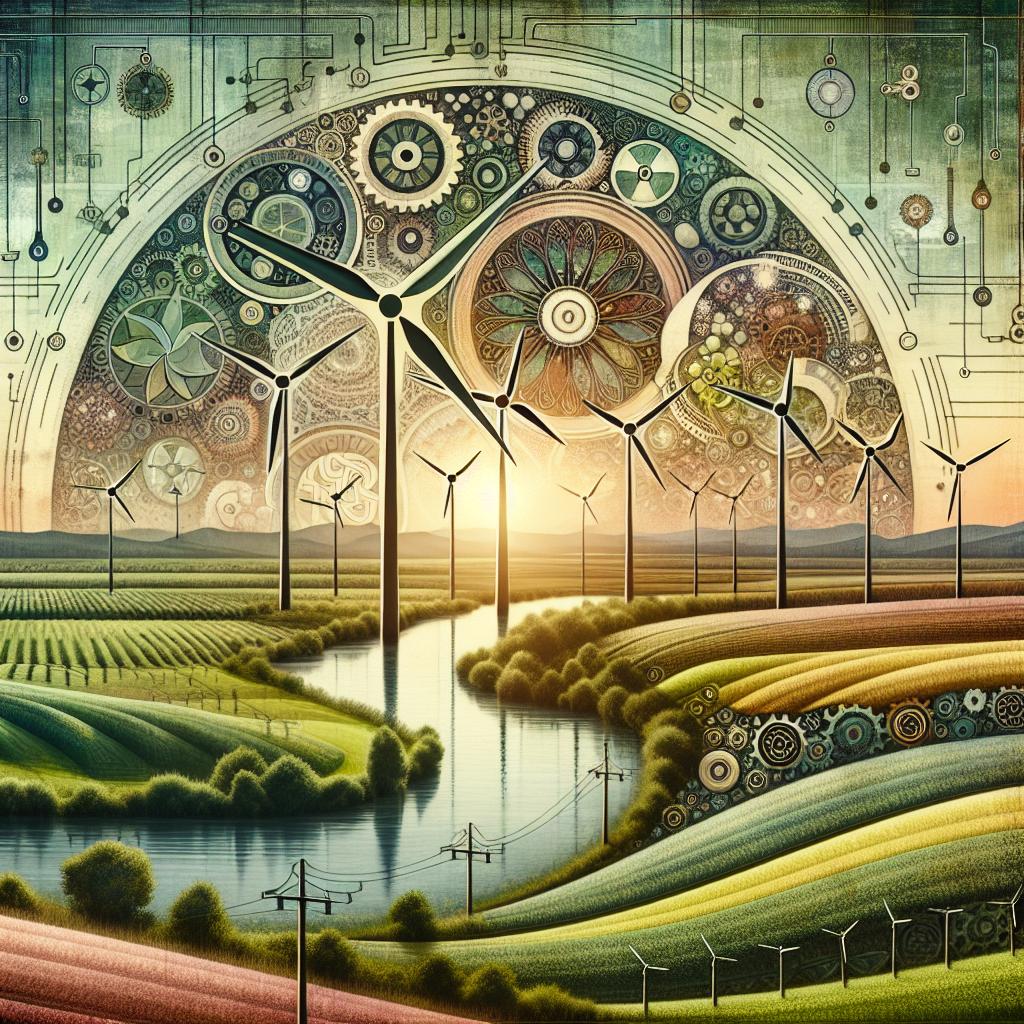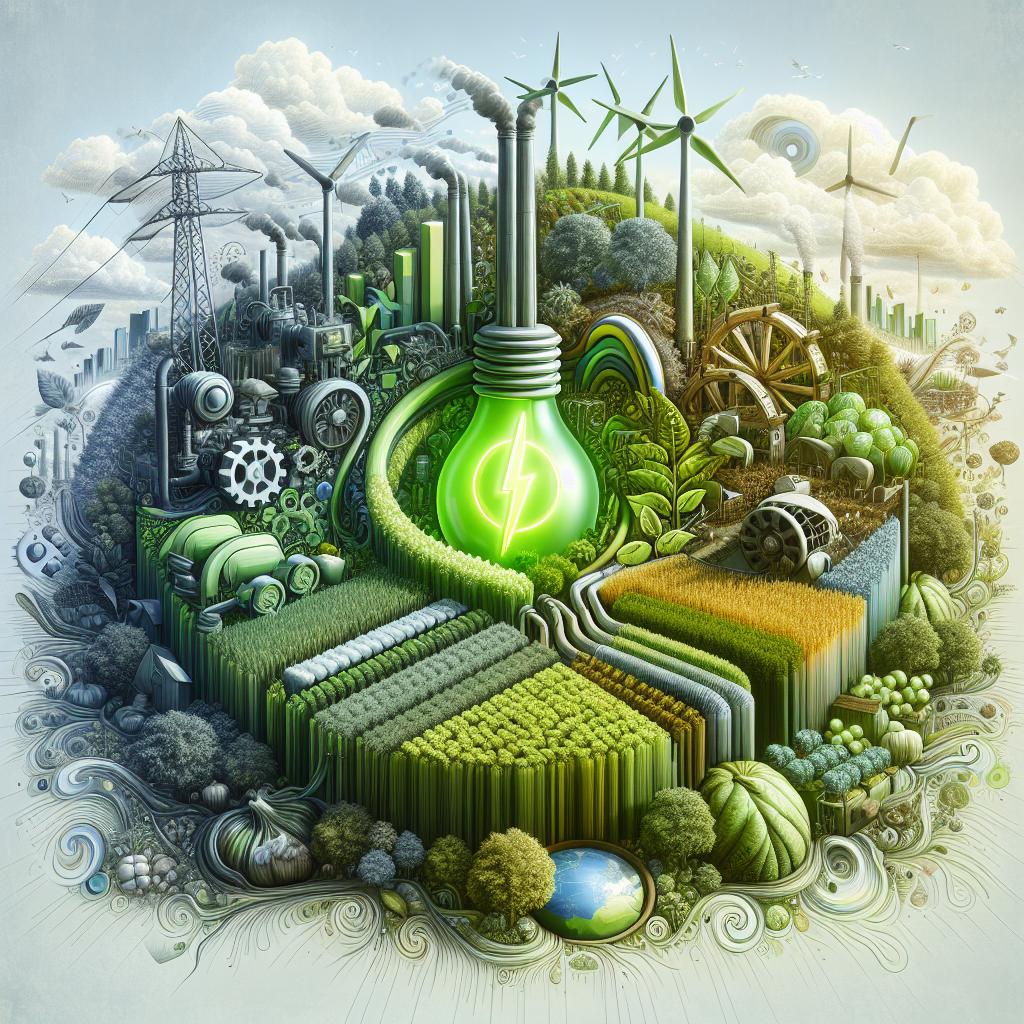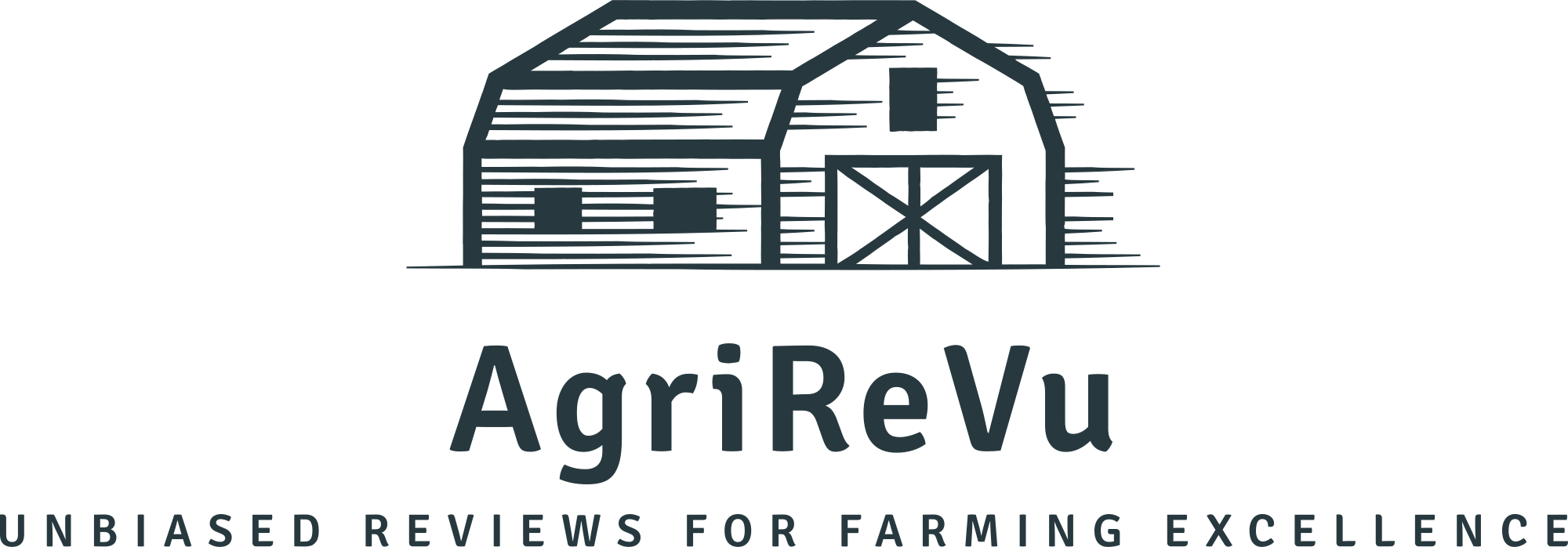This post may contain affiliate links which means I may receive a commission for purchases made through links. Learn more on my Private Policy page.
In the heart of each flourishing farm lies a vital element: water. It nourishes crops,supports livestock,and sustains the vibrant ecosystems that thrive within agricultural landscapes.However, as climate change and water scarcity increasingly challenge customary irrigation methods, the time has come for an innovative solution to emerge from the fields. Welcome to the world of renewable energy—the sunshine that brightens our days and the gentle whispers of the wind—that offer not only a path to sustainability but also a new way to revitalize farm irrigation systems. In this article, we’ll explore how harnessing solar, wind, and other renewable sources can transform your farm’s irrigation practices, boost efficiency, and reduce dependency on fossil fuels. Join us on this journey toward greener pastures, where sustainability meets innovation, and discover how to cultivate a brighter future for your crops and our planet!
Embracing the Sun: Solar-Powered Irrigation Solutions for Sustainable Farming
As the demand for sustainable farming practices grows, integrating solar power into irrigation systems offers a promising solution that advances both productivity and environmental stewardship.Solar-powered irrigation systems harness sunlight to provide reliable water delivery, substantially reducing dependency on fossil fuels and lowering operational costs. By utilizing advanced solar panels coupled with efficient pumps, farmers can maintain consistent moisture levels in thier crops, crucial for healthy growth and high yields. This eco-pleasant approach not only supports agriculture but also contributes to a healthier planet.
The benefits of adopting solar-powered irrigation are multifaceted. Consider these key advantages:
- cost Efficiency: Reduce utility bills and operational costs by utilizing free solar energy.
- Environmental Impact: Lower carbon footprint and promote biodiversity by minimizing chemical runoff.
- Resilience: Provide a reliable water source during dry spells or power outages, ensuring crop integrity.
- Accessibility: Empower smallholder farmers in remote areas by making irrigation feasible without extensive infrastructure.
| Feature | Standard Irrigation | Solar-Powered Irrigation |
|---|---|---|
| energy Source | Fossil Fuels | Solar Energy |
| Cost of Operation | High | Low |
| Environmental Impact | High | Low |
| Water Consistency | Variable | Reliable |

Harnessing the Wind: Turbocharging Irrigation with Wind Energy
Wind energy has emerged as a transformative force in agriculture, especially in the realm of irrigation. By integrating wind turbines into existing irrigation systems, farmers can significantly reduce operational costs and enhance water supply reliability. This approach not only lowers dependency on fossil fuels but also promotes a sustainable farming model that aligns with environmental goals. With a well-placed wind turbine, the kinetic energy generated by passing winds can be directly harnessed to power pumping systems, thereby optimizing water delivery to crops during critical growth periods.
Incorporating wind energy into irrigation strategies can yield numerous benefits, including:
- Cost Savings: Reduce electricity expenses, freeing up funds for other essential farming needs.
- Increased Reliability: Ensure consistent water delivery, notably in regions prone to drought.
- Environmental Sustainability: Lower carbon footprint by minimizing reliance on traditional energy sources.
Consider the following table showcasing the potential impact of wind energy on irrigation efficiency:
| Wind Turbine Size | Energy Produced (kWh/year) | Water Pumping Capacity (Gallons/day) |
|---|---|---|
| Small (5 kW) | ~12,000 | 2,200 |
| Medium (10 kW) | ~24,000 | 4,400 |
| Large (50 kW) | ~120,000 | 22,000 |

Watering Smartly: Integrating Smart Technologies for Efficient Resource Use
In the modern agricultural landscape, integrating technology into irrigation systems is more crucial than ever. By leveraging renewable energy sources such as solar or wind power, farmers can ensure their irrigation processes are not only eco-friendly but also cost-effective. Utilizing advanced sensors and IoT devices can further enhance efficiency by offering real-time data on soil moisture levels, weather patterns, and crop needs. This details helps in making informed decisions about when and how much to water, reducing waste and promoting healthier crop yields.
To illustrate the potential benefits of this integration, consider the following advantages:
- Cost Savings: Utilizing renewable energy reduces reliance on fossil fuels, leading to lower energy costs.
- Environmental Impact: Decreases greenhouse gas emissions and promotes sustainable farming practices.
- Enhanced Control: Smart irrigation systems provide precise control over water use, optimizing growth conditions for crops.
Here’s a simple comparison table highlighting the effectiveness of traditional versus smart irrigation systems powered by renewable energy:
| Feature | Traditional Irrigation | Smart Irrigation with Renewable Energy |
|---|---|---|
| Energy Source | Fossil Fuels | Solar/Wind |
| Water Use | Higher | Optimized |
| Initial Setup Cost | Lower | Higher |
| Long-term Savings | minimal | significant |
Economics of Green Power: Cost-Effective Strategies for Renewable Irrigation Systems
Transitioning to renewable energy sources for irrigation not only preserves natural resources but also offers a pathway to significant cost savings for farmers. Solar and wind energy systems can drastically reduce overhead costs, leading to a reduction in operational expenses over time. By harnessing sustainable energy, farm operators can minimize their reliance on grid electricity and fossil fuels, which are frequently enough subject to price volatility. Some effective strategies to implement include:
- Investing in solar panel installations: they can power pumps and controllers, optimizing energy use throughout the irrigation cycle.
- Utilizing wind turbines for areas with consistent wind patterns, providing an additional energy source for pumps.
- Integrating battery storage systems: This allows farms to store excess energy generated during peak production for later use when the sun isn’t shining or the wind isn’t blowing.
To visualize the financial benefits associated with these renewable systems, consider the following table:
| Energy Source | initial Investment | estimated Annual Savings |
|---|---|---|
| Solar Power | $10,000 | $2,000 |
| Wind Power | $8,000 | $1,500 |
| Battery Storage | $5,000 | $1,000 |
implementing these approaches not only boosts the economic viability of the farm but also enhances sustainability practices, ensuring a healthier ecosystem and a more resilient agricultural future.
Future Outlook
As we close the chapter on our exploration of incorporating renewable energy into farm irrigation systems, it’s clear that the path to sustainable farming is not just a dream—it’s a vibrant reality waiting to be cultivated. By harnessing the sun’s warm embrace or the gentle whispers of the wind, farmers can not only ensure a bountiful harvest but also nurture the planet we all call home.
Imagine fields glistening under the golden sun with irrigation systems powered by clean energy, contributing to both productivity and environmental stewardship. The shift towards renewable energy in irrigation isn’t just about efficiency; it’s a commitment to future generations, ensuring that they, too, can enjoy the fruits of a thriving agricultural landscape.
So,as you step back onto your fields,consider the possibilities that renewable energy brings. Whether you’re a seasoned farmer or just starting your journey, every small change takes us one step closer to a greener, more sustainable world. Together, let’s sow the seeds of innovation and watch them flourish into a rich tapestry of sustainable farming. Here’s to harvesting not just crops, but a brighter, cleaner future for all! 🌱✨
This post may contain affiliate links which means I may receive a commission for purchases made through links. Learn more on my Private Policy page.

